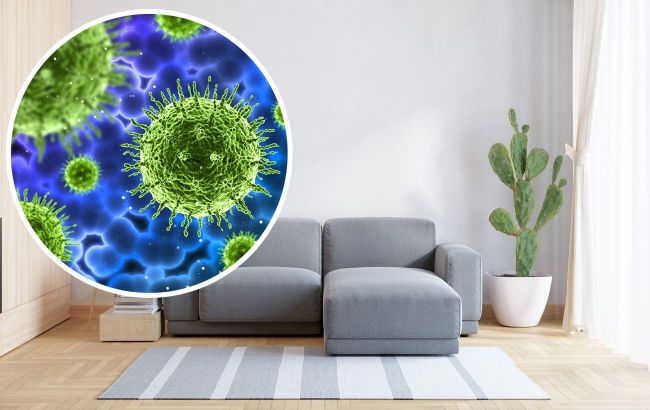Where do most microbes hide in house: Don't forget to clean there thoroughly
 The scientist named the places in the house that are dirtier than the toilet (Collage RBC-Ukraine)
The scientist named the places in the house that are dirtier than the toilet (Collage RBC-Ukraine)
To prevent harmful bacteria from settling in your home, regular and thorough cleaning of all areas is necessary. However, many people try to shorten the time spent on this unpleasant task and often overlook certain areas. Unfortunately, microbes can hide exactly there.
The places in the house where the most microbes hide are named according to Fit for fun.
Bathrooms and toilets
When it comes to ensuring antibacterial cleanliness in the home, most people immediately think of bathrooms and toilets. However, according to microbiologist Charles Gerba from the University of Arizona, compared to other bacteria, this is the least of our worries.
Most people spend a lot of time and energy trying to keep their toilet in perfect condition, but they forget about other important factors.
The scientist noted that he is concerned about the habit of many people to flush with the toilet lid open. During flushing, fecal microbes can be thrown into the bathtub almost 2 meters away and end up on your towels and even toothbrush.
He also recommends changing towels at least once every 3-4 days. Bacteria thrive in damp and warm fabric. Many of them don't even die during washing, so towels need to be washed with an adequate amount of detergent and in very hot water.
Kitchen
This is where we prepare food, and it's the main "dirt producer." Studies have shown that cutting boards and kitchen sinks contain more microbes and fecal matter than toilets.
Escherichia coli and salmonella bacteria also thrive here easily: we defrost meat in the sink or refrigerator and cut it on the countertop.
Microbiologists also regularly find something on the refrigerator handle: most people don't particularly think about what we touch while preparing food, and regularly open the refrigerator door.
Teapots can also be dangerous: experts recommend boiling only fresh water and not letting it stand.
The absolute leader in the fight against bacterial contamination is the kitchen assistant, which is actually intended to ensure cleanliness. A 2017 study found 362 different types of bacteria in kitchen sponges. Microbes accumulate in just one cubic centimeter.
The reason is: You use napkins and sponges to clean all surfaces. Invisible pathogens spread through it, too stubbornly: when scientists boiled the sponge, bacteria immediately grew back again.
That's why Charles Gerba recommends disinfecting work surfaces no less than once a day. An antibacterial cleaner is your best friend in the fight against salmonella, E. coli, and other microbes.
Earlier, we wrote that a scientist named an object of everyday use that is many times dirtier than a toilet.
And we also talked about what will happen to the body if you don't wash for a long time.
This material is for informational purposes only and should not be used for medical diagnosis or self-treatment. Our goal is to provide readers with accurate information about symptoms, causes, and methods of detecting diseases. RBС-Ukraine is not responsible for any diagnoses that readers may make based on materials from the resource. We do not recommend self-treatment and advise consulting a doctor in case of any health concerns.

